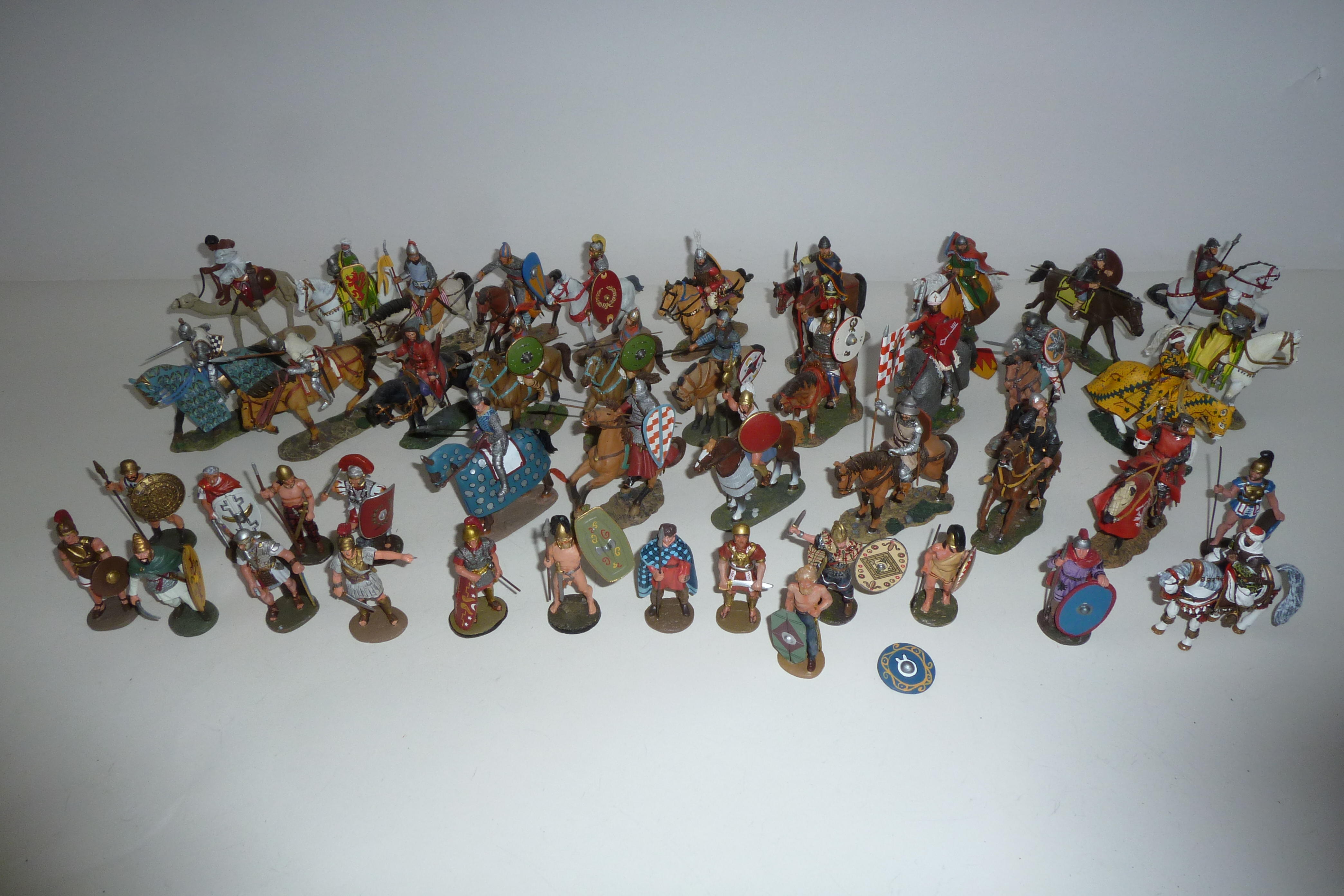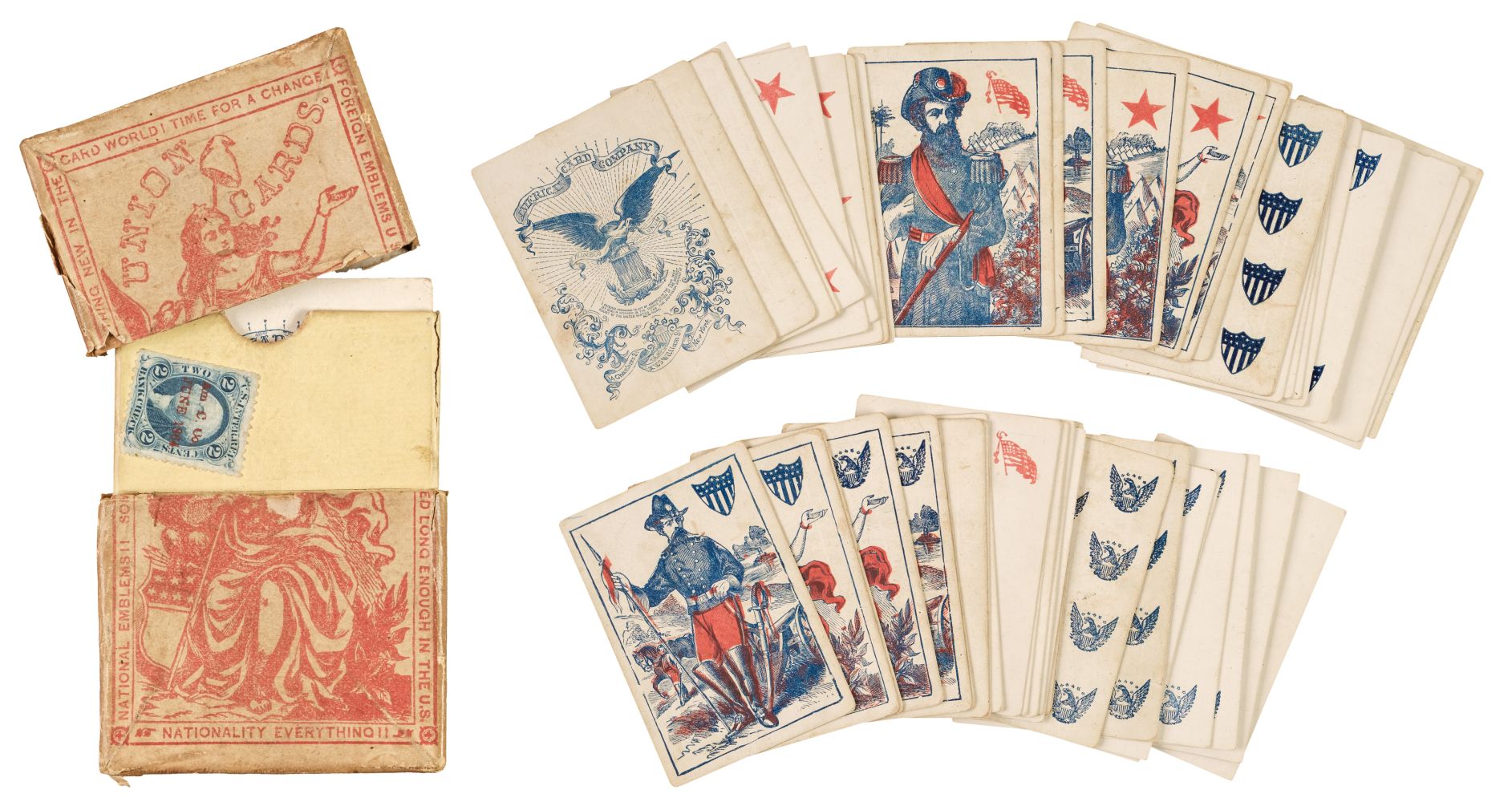American Civil War and Naval History interest: a piece of timber cut from the wreck of the Confederate Ironclad Ram 'Virginia', also known as 'Merrimack' and made into a fine presentation walking cane for the celebrated builder of Union Ironclads James Buchanan Eads; offered together with a small collection of associated memorabilia. Oak cane 37.75 in. (960 mm) in length, gold knob with faceted sides finely engraved with tight foliate scrolls within panels, a slightly domed top bearing the inscription 'A PIECE OF THE MERRIMACK DESTROYED MAY 11TH 1862 / James B. Eads From Edward Bates. Quercus Ferro cedit'; shaft pierced for a lanyard, the hole being fitted with gold grommets, shod in brass. At the outbreak of the American Civil war the Union States of the North possessed the advantage of almost all of North America's industrial capacity, and nearly two thirds of her population. The Confederate South with its agricultural slave economy was forced to import almost all of its warlike goods as well as a significant proportion of its food supplies, and thus a key element of Union strategy was a Naval blockade of the Southern ports. The Union had also retained its Navy, but the Confederates had gained possession of the Naval yard at Norfolk, Virginia, and with it the remains of the wooden hulled steam frigate Merrimack, partially burned by the Union Navy to deny her use to the Confederates. On the remains of her hull the 'Rebels' built a new vessel, armoured in iron and re-Christened Virginia (a name that is almost invariably disregarded in favour of the original 'Merrimack'). The Virginia sailed into the waters of Hampton Roads on March 8th 1862 to attack the blockading ships. She sank the Union sloop Cumberland with her ram (almost being dragged to the bottom herself in the process) and forced the frigate Congress to run aground before destroying her with gunfire. All the while the return fire of Union ships and shore batteries bounced off her armour. On the following day she was challenged by the Union's own ironclad the Monitor, a modern design with a rotating turret. After an inconclusive exchange of fire both ships withdrew, each claiming victory. Two months later Union forces recaptured Norfolk, and the Virginia was scuttled by the retreating Confederates; but despite her short life her name resonates through the history of Naval Warfare as a participant in the battle that confirmed the primacy of armored warships and set the major powers of the world on a new course of ship construction. She is also remembered as a remarkable example of Confederate initiative and daring. The diary of U.S. Secretary of State Edward Bates includes the following entry for May 13th 1862 (two days after the Merrimack was scuttled) "Saw the wrecks of the Cumberland the Congress, and the Merrimack. Admiral Goldsborough gave me a stick of white oak, large enough to be turned into a heavy cane, sawn from a beam of the Merrimack". James Buchanan Eads was a major figure in the history of American ironclads. As an engineer and salvage entrepreneur he was an expert in the navigation of the Mississippi river and its tributaries, and he had, at the outset of the war, volunteered his services to the North. He built numerous Ironclad gunboats (predating the Merrimack) which served with distinction in the vital river war. He was, also, a personal friend of Edward Bates's and these factors must have prompted Bates to bestow the gift of the cane upon him. The Latin phrase 'Quercus Ferro cedit' (Oak yields to Iron) neatly encapsulates both Eads's contribution to the war, and the portentous events of the celebrated Battle of Hampton Roads. This is a fine and substantial relic of a famous ship and a famous battle, and together with the fact that it was salvaged within days of the Merrimack's final destruction, while the Civil War still raged, this makes it a most impressive example of American Civil War memorabilia. Offered with portrait miniatures of Eads and wif
American Civil War and Naval History interest: a piece of timber cut from the wreck of the Confederate Ironclad Ram 'Virginia', also known as 'Merrimack' and made into a fine presentation walking cane for the celebrated builder of Union Ironclads James Buchanan Eads; offered together with a small collection of associated memorabilia. Oak cane 37.75 in. (960 mm) in length, gold knob with faceted sides finely engraved with tight foliate scrolls within panels, a slightly domed top bearing the inscription 'A PIECE OF THE MERRIMACK DESTROYED MAY 11TH 1862 / James B. Eads From Edward Bates. Quercus Ferro cedit'; shaft pierced for a lanyard, the hole being fitted with gold grommets, shod in brass. At the outbreak of the American Civil war the Union States of the North possessed the advantage of almost all of North America's industrial capacity, and nearly two thirds of her population. The Confederate South with its agricultural slave economy was forced to import almost all of its warlike goods as well as a significant proportion of its food supplies, and thus a key element of Union strategy was a Naval blockade of the Southern ports. The Union had also retained its Navy, but the Confederates had gained possession of the Naval yard at Norfolk, Virginia, and with it the remains of the wooden hulled steam frigate Merrimack, partially burned by the Union Navy to deny her use to the Confederates. On the remains of her hull the 'Rebels' built a new vessel, armoured in iron and re-Christened Virginia (a name that is almost invariably disregarded in favour of the original 'Merrimack'). The Virginia sailed into the waters of Hampton Roads on March 8th 1862 to attack the blockading ships. She sank the Union sloop Cumberland with her ram (almost being dragged to the bottom herself in the process) and forced the frigate Congress to run aground before destroying her with gunfire. All the while the return fire of Union ships and shore batteries bounced off her armour. On the following day she was challenged by the Union's own ironclad the Monitor, a modern design with a rotating turret. After an inconclusive exchange of fire both ships withdrew, each claiming victory. Two months later Union forces recaptured Norfolk, and the Virginia was scuttled by the retreating Confederates; but despite her short life her name resonates through the history of Naval Warfare as a participant in the battle that confirmed the primacy of armored warships and set the major powers of the world on a new course of ship construction. She is also remembered as a remarkable example of Confederate initiative and daring. The diary of U.S. Secretary of State Edward Bates includes the following entry for May 13th 1862 (two days after the Merrimack was scuttled) "Saw the wrecks of the Cumberland the Congress, and the Merrimack. Admiral Goldsborough gave me a stick of white oak, large enough to be turned into a heavy cane, sawn from a beam of the Merrimack". James Buchanan Eads was a major figure in the history of American ironclads. As an engineer and salvage entrepreneur he was an expert in the navigation of the Mississippi river and its tributaries, and he had, at the outset of the war, volunteered his services to the North. He built numerous Ironclad gunboats (predating the Merrimack) which served with distinction in the vital river war. He was, also, a personal friend of Edward Bates's and these factors must have prompted Bates to bestow the gift of the cane upon him. The Latin phrase 'Quercus Ferro cedit' (Oak yields to Iron) neatly encapsulates both Eads's contribution to the war, and the portentous events of the celebrated Battle of Hampton Roads. This is a fine and substantial relic of a famous ship and a famous battle, and together with the fact that it was salvaged within days of the Merrimack's final destruction, while the Civil War still raged, this makes it a most impressive example of American Civil War memorabilia. Offered with portrait miniatures of Eads and wif














Try LotSearch and its premium features for 7 days - without any costs!
Be notified automatically about new items in upcoming auctions.
Create an alert